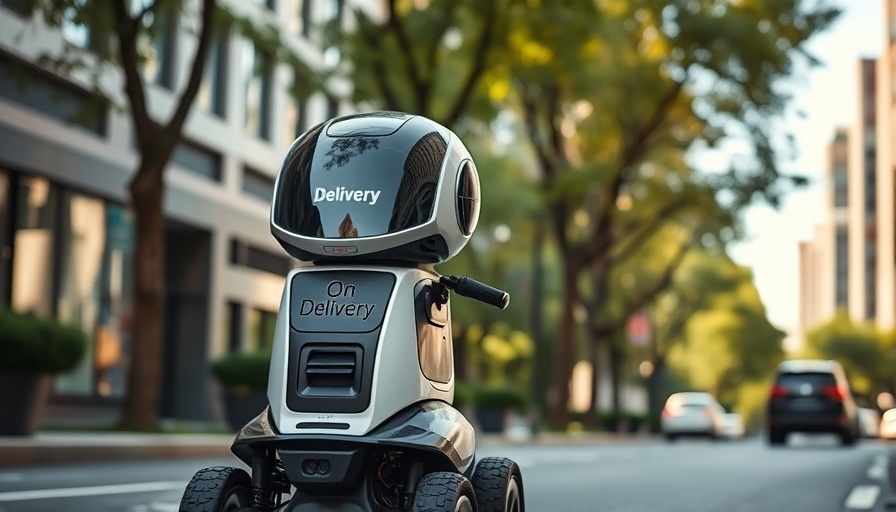
Transforming Last-Mile Delivery: The Robotics Revolution
Ali Kashani, co-founder and CEO of Serve Robotics, believes that food delivery and public market access are pivotal for scaling robotics. This sentiment resonates in an era where securing investment is a Herculean task for many start-ups. Currently, Serve is in the spotlight, having recently secured $80 million from investors including Nvidia and Uber, aiming to amplify its fleet from 100 to 2,000 sidewalk delivery robots across the U.S. by year's end. This leap isn't just about numbers; it's about redefining logistics in urban landscapes.
Navigating Challenges in Fundraising and Growth
In a world grappling with rising interest rates and fluctuating investment climate, Kashani describes the fundraising process as fraught with anxiety. The FOMO (fear of missing out) mentality prevalent among investors complicates the landscape, creating a competitive edge for companies like Serve that can present a clear path to profitability. Amid this challenging financial backdrop, Serve’s unique approach—leveraging food delivery as a test bed—stands out. By integrating robotics into last-mile logistics, they have crafted a business model capable of demonstrating technology's value in real-world scenarios.
A Glimpse into the Future of Robotics and Delivery
Understanding the trajectory of supply logistics is essential for aspiring entrepreneurs looking into business startup ideas. Serve’s ambition to dominate the last-mile delivery narrative could provide valuable lessons on innovation and market adaptation. With an interconnected fleet analyzing vast amounts of data daily, Serve is poised not just to meet current delivery demands but to set future standards as urban centers evolve.
The Intersection of Robotics and Urban Mobility
The company's pathway has also revealed fascinating dynamics between ground-based robots and drones in logistics. Kashani suggests that, when coordinated thoughtfully, these technologies can enhance efficiency in delivery. For start-ups, this serves as inspiration, showcasing how future business models could integrate multiple dimensions of technology to address long-standing urban mobility challenges. By thinking beyond individual solutions, new entrepreneurs can forge comprehensive operational strategies that leverage advancements across sectors.
What Today's Start-Ups Can Learn From Serve
The journey of Serve Robotics is a case study in strategic foresight for small business startup ideas that aim to disrupt traditional markets. Their Kickstarter model of addressing last-mile delivery challenges serves as a blueprint for aspiring entrepreneurs. It underlines the importance of aligning business strategies with market needs, particularly in metropolitan areas where logistical hurdles are significant.
Common Challenges and How to Overcome Them
New start-ups often face a plethora of challenges, from securing business startup funding to navigating operational logistics. Drawing inspiration from Serve's tactical advancements can equip new founders with potential strategies for overcoming hurdles. Understanding your target market is crucial—knowing where to invest, how to allocate resources effectively, and which partnerships to pursue can spell the difference between startup success and failure.
Join the Conversation: What’s Next in Robotics?
As Serve Robotics continues to evolve, their journey reflects broader trends shaping the tech industry. For budding entrepreneurs, engaging with community discussions, attending business startup events, and partaking in dedicated spaces for innovation will keep them informed and connected. Whether it's through podcasts like Equity or participation in workshops, creating a network can tremendously enrich their startup experience.
In a climate where adaptability is crucial, harnessing insights from successful business startups like Serve can serve as a guiding star for founders navigating their own paths toward success.
 Add Row
Add Row  Add
Add 



Write A Comment